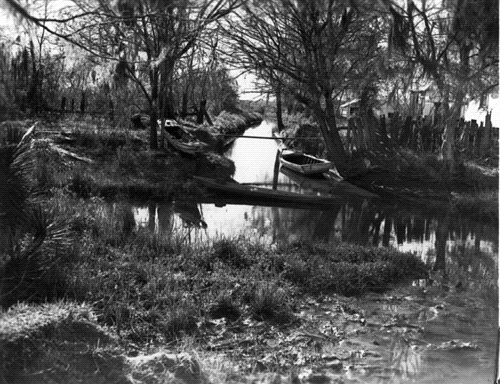Isle de Jean Charles is located in Terrebonne Parish, Louisiana, 15 miles north of the Gulf of Mexico.
For 170 years, a Native American Cajun community has occupied Isle de Jean Charles. Now the land that has sustained them for generations is vanishing before their eyes. A host of environmental problems – coastal erosion, lack of soil renewal, oil company and government canals, and sea level rise from global warming – are overwhelming the island. Over the last century, Isle de Jean Charles has been gradually shrinking, and it is now almost gone.
The island was originally settled by Jean Marie Naquin, a Frenchman, who married Pauline Verdin, a Native American. Jean Marie was disowned by his family for marrying an Indian, so he and Pauline moved to the land where Jean Marie’s father, Jean Charles Naquin (whom the Island is named after), had travelled many times to service the pirate Jean Lafitte—the land which is now known as Isle de Jean Charles.
All of Jean Marie and Pauline’s children, except their oldest daughter, married Indians. The families moved on the Island as a result of intermarriage between these families. No one knows the actual date this occurred, but according to the oral history that has been handed down, it was in the early 1800s. Isle de Jean Charles was considered “uninhabitable swamp land” until 1876, when the State of Louisiana began selling the land to private individuals. Before this time it was illegal for a Native American to purchase land. The 1880 Terrebonne Parish Census listed the first land buyers as residents and included just four families, all related by marriage. Their nationality often times erroneously reported on early census documents as Mulatto or Negro, they have and continue to be Native Americans.
By the census of 1910, the area was officially called “Isle á Jean Charles” and had grown to sixteen families, all descendants of the first four families; a total of 77 people. The occupations of the men were fishermen, oystermen, or trappers.
The early years on Isle de Jean Charles left the Native Americans to maintain their traditions and culture, there was no education except for that taught by Tribal members until the 1930’s when a missionary school was built on the mainland. The children went by pirogue to school, traveling four miles each way by paddle or push pole. When the public schools were integrated in 1967, Indians were finally allowed to attend public schools with the other races. Before this many Tribal Member’s decided to relocate to other nearby community bayous and disguise their race so that their children could attend the white schools.
In the 1940s oil companies began drilling around the island and in 1953, a road to Isle de Jean Charles to Pointe-aux-Chene was built through the marshland. In the past several decades, the marshland has eroded and turned into the open water, leaving the road vulnerable to erosion and flooding. During high winds, the road frequently becomes submerged by water and impassable.
Isle de Jean Charles is the only community in the surrounding area which has had designated Chiefs from their historic time of settlement. The Chief ran the grocery store, was responsible for the mail, arbitrated disputes, represented the people of the island with outsiders, and gathered the residents for group work in the community. Each Chief named his successor, being the person he thought best qualified to fulfill the duties.
Albert Paul Naquin, the present Chief was appointed by his brother in 1997. Chief Albert is a strong advocate with a great passion for his people. He is constantly seeking ways to maintain the culture, traditions and the way of life his Tribe has enjoyed for generations, all the while very aware of the issues the Tribe faces today.
Sadly, Isle de Jean Charles is not the only community in danger. There are few environmental problems as dire as coastal erosion along the Gulf Coast. Southern Louisiana is the fastest disappearing landmass on earth. Each year, an area of land the size of Manhattan is ripped off the coast of Louisiana. Over the past century, at least 2,000 square miles of marshland have disappeared, turning landmasses into open salt water, shifting the Gulf Coast as we know it.
The beautiful willows and live oaks that once lined Bayou Jean Charles, and were the childhood playground for the children of the Isle, are a thing of the past. More than a few houses maintain damage from storms gone by. For these Biloxi-Chitimacha-Choctaw Indians, their land is more than simply a place to live. It is the epicenter of their people and traditions. It is where, for eight generations, their ancestors cultivated a unique part of Louisiana culture.
Some remember when Isle de Jean Charles was 5 miles wide and filled with lush cypress groves and cow pastures. The island is now a mere 1/4 mile sliver. A series of hurricanes have battered the community in recent years and as the marsh erodes, there is less protection from future storms. Many of the island’s families have moved away from their hurricane-wrecked homes because they are tired of rebuilding. Around two dozen families remain on the island. The Chief of the tribe is tirelessly raising support to relocate his people to higher ground while the narrow island still stands.
Visit the Isle de Jean Charles website here: www.isledejeancharles.com







